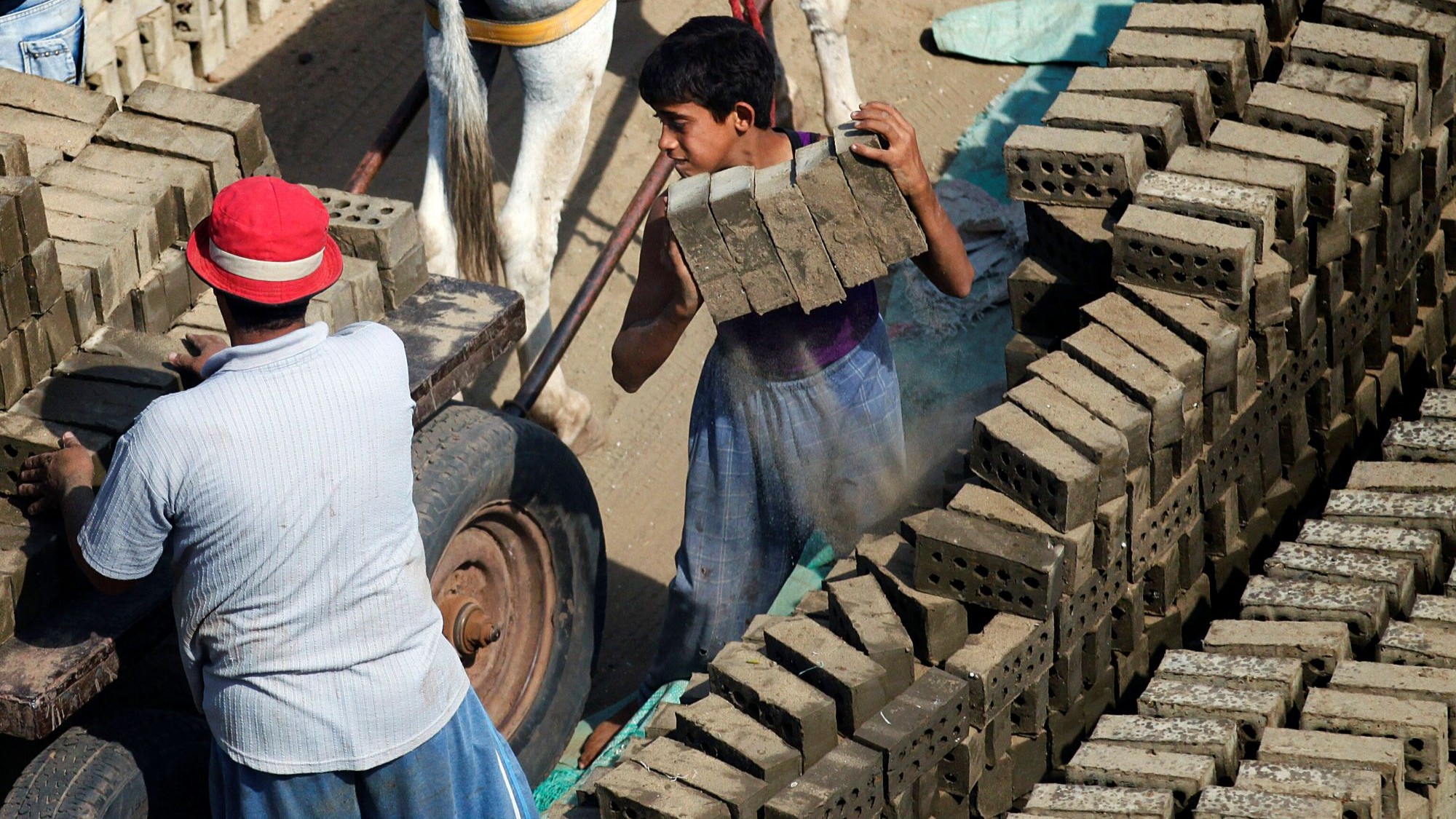New regulations won't end poverty

At night, Karim Abdallah wanders between the cafés near the historic Abdeen Palace in central Cairo. The gaunt teenager in worn-out clothes holds a packet of sweets in his hand and offers them to the guests.
After four hours, Karim has sold all his sweets. His earnings: just under 300 pounds (about five euros). With that, he returns home to the low-income neighbourhood of al-Basateen.
Karim is in the sixth grade of primary school. After school, the boy goes to work to earn a living for his five siblings and his mother. His father left the family.
Karim regularly switches between different jobs. The hardest, he recalls, was in a workshop: "I worked from six in the morning until seven in the evening for 600 pounds (about 11 euros) a week."
A new labour law came into force at the beginning of September that criminalises Karim's work and that of other children. It is now considered "indirect begging". In addition, Karim has not yet reached the legal minimum age of 15 for starting work.
According to the law, work must not prevent children from completing their education. Working hours between 7pm and 7am, as well as hazardous working environments, are also prohibited for children.
Karim's work is dangerous; he often walks between cars on the main road to sell his goods.

Is Egypt the 'new Lebanon'?
Food prices doubled, salaries halved, banks restricting withdrawals: Egyptians now have the same problems as the Lebanese. But if things get worse here, the fallout will be far more damaging. By Cathrin Schaer
Over one million working children
Karim is not an isolated case. In Al-Omraneya, Giza, an area in Greater Cairo that is home to many low-income families, child labour is immediately visible: children spend hours baking bread in open-fire ovens, work in mechanic shops and supermarkets, or drive tuk-tuks, three-wheeled taxis.
One of these children is Mustafa. The 14-year-old boy works for six hours each morning before attending evening classes. He works to help his family of seven and looks upon his labour with pride: "I'm supporting my father," he explains.
In 2021, an estimated 4.9 percent of children in Egypt worked, around 1.3 million in total. Some 900,000 of them were exposed to hazardous conditions. According to a survey by the National Council for Childhood and Motherhood, the number rose to more than 2.7 million children by 2023, 62 percent of whom were between 14 and 16 years old.
The normalisation of child labour
The risk of child labour rises with poverty and family size. Economic necessity is what pushes children into the workforce.
Researcher Shaimaa Khairy Abdel-Magid of Cairo University examined a group of 14,000 working children in her study "Impact of Poverty on Child Labour in Egypt". The study shows that the proportion of child labour is higher in rural areas than in urban ones, due to higher poverty rates in the countryside.
According to a 2024 World Bank report, Egypt's poverty rate increased to over 30 percent that year. This has contributed to a widespread acceptance of child labour as normal within large parts of Egyptian society.
Poverty is the key factor, agrees human rights lawyer and head of a children's rights network, Ahmed Masilhi. "The exploitation of children and violations of their rights have increased. This is a result of the poor economic situation and lack of social assistance," he tells Qantara.
Time and again, tragic accidents expose the dangers of child labour. Yet no serious measures are taken. In the most recent incident, in June, a truck carrying 20 girls aged between 14 and 23 overturned, killing everyone on board. They had been helping with the grape harvest in Monufia.
Refugee children are also affected by exploitation. In the 6th of October City area of Greater Cairo, many Sudanese children work as street cleaners, according to local media. Since the outbreak of war in Sudan in April 2023, Egypt has taken in around 1.5 million Sudanese refugees, according to official reports. While Egyptian children often work due to poverty, refugees are the group most vulnerable to exploitation.
The government's plan
The government’s partial recognition of the scale of this problem is reflected in its announcement of a national plan for "combating the worst forms of child labour" developed in cooperation with the International Labour Organisation (ILO). The first phase ran from 2018 to 2025, and the second is set to continue until 2030. Some human rights activists, however, have said they consider the plan superficial and inadequate.
The government points to achievements such as the adoption of a new labour law, the creation of "child labour control units" within the Ministry of Manpower, the creation of "more than 20,000 vocational training contracts for children aged 15 to 18" and support for "1000 microprojects for the families of children involved in child labour."
"The new labour law contains clear provisions, including the minimum working age and the type and duration of permitted work," says Ihab Mansour, a member of the Labour Force Committee in Egypt's House of Representatives. "It prohibits children from working more than six hours a day and imposes a one-hour break. The rest comes down to enforcement and the provision of sufficient resources—more qualified staff are needed here," he told Qantara. Egypt's Ministry of Manpower did not respond to a request for comment.
Masilhi, the head of the children's rights network, says that throughout his years of work in this field, the same methods have always been used to address the problem. Conferences have been organised and plans and laws issued, he says, but they exist only on paper. He calls for the establishment of more government committees to monitor child labour across the country.
Early school leavers
Masilhi adds that the National Council for Childhood should carry out inspections to prevent child labour. "It should also, in cooperation with other government bodies such as the Ministry of Social Solidarity, support families who send their children to work out of poverty. But this generally does not happen," he says.

Cairo is becoming unwalkable
Cairo's footpaths are disappearing, its public spaces are shrinking and its trees are being uprooted to make way for car-focused infrastructure and urban sprawl. For pedestrians, the city has become a hostile place.
The growing number of children leaving school to work has prompted the authorities to offer financial support to impoverished families on the condition that their children return to school. In this context, the "Solidarity and Dignity" initiative was launched in 2015. However, the payments amount to only around 900 pounds per month (roughly 16 euros).
Masilhi praises the initiative, but stresses that such programmes need to be expanded to include all families in need, with payments adjusted to reflect rising prices and inflation rates.
This is an edited translation of the Arabic original. Translated from the German version by Max Graef Lakin.
© Qantara.de